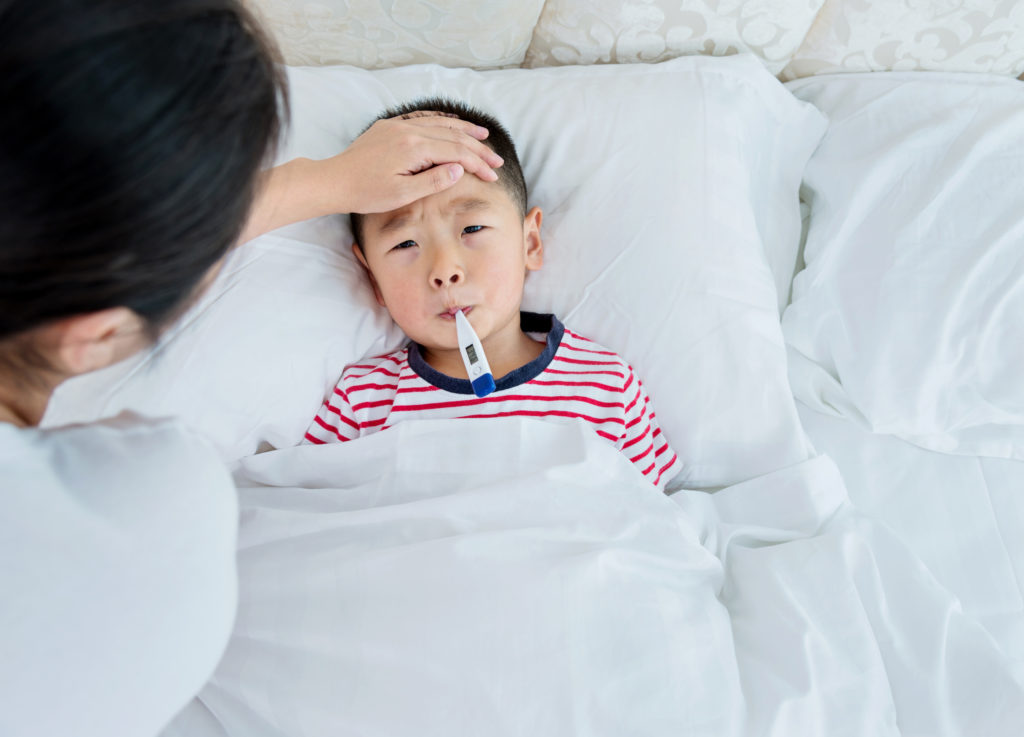Febrile Seizures:
What You Need to Know

Approximately 4 percent of children will experience a febrile seizure which can be scary to witness, but they’re fairly common in children ages six months to five years old who have a high fever.
What Are Febrile Seizures?
Febrile seizures are convulsions that can happen when a young child has a temperature above 100.4°F (38°C). The seizure usually lasts for a few minutes and stops on its own, even if fever persists. Febrile seizures can look serious, but usually stop without treatment and don’t cause brain damage or other health problems.
Febrile seizures are most common at 12 to 18 months of age. Most of these children have just one febrile seizure in a lifetime. About one-third of children who have had a febrile seizure have 1 to 3 recurrences over the next few years. Most children outgrow having febrile seizures by the time they are 5 years old.
Febrile seizures are not considered epilepsy (seizure disorder). Kids who have a febrile seizure have only a slightly increased risk for developing epilepsy.
What Are the Signs & Symptoms of Febrile Seizures?
There are two types of febrile seizures:
- Simple febrile seizures are most common. They’re usually over in a few minutes. During this type of seizure, a child may:
- become stiff
- become unconscious or not know where they are
- have jerking or twitching movements
- have the eyes roll backward
- have noisy breathing
- Complex febrile seizures last longer than 10 minutes, happen more than once in 24 hours, and involve movement or twitching of only one part or one side of the body.
What should I do when my child has a seizure?
Prevent injury:
To prevent accidental injury, place the child on the floor or ground. The child should not be held or restrained during a seizure. Place your child on his or her side to prevent choking and loosen any clothing around the head and neck. Watch for signs of breathing problems, including bluish color in the face. Try to keep track of how long the seizure lasts. If the seizure lasts more than 5 minutes or your child turns blue, call 911 right away.
Reduce the fever:
Do not attempt to give your child medicine or fluids during a seizure. Once the seizure is over and your child is alert, you can give appropriately dosed acetaminophen or ibuprofen. Do not give your child aspirin. You can cool them off by removing extra articles of clothing and keep them hydrated with fluids.
It’s also important to know what you should not do during a febrile seizure: Do not try to hold or restrain your child. Also, do not put anything in your child’s mouth, including your fingers.
After the seizure, your child may be sleepy and confused for a while. When the seizure is over, call your CPCMG pediatrician for an appointment to find the cause of the fever. Your pediatrician will examine your child and ask you to describe the seizure. They may also recommend some tests to find the cause of the fever. In most cases, no other treatment is needed. If you have questions or concerns about febrile seizures, please contact your CPCMG pediatrician.

